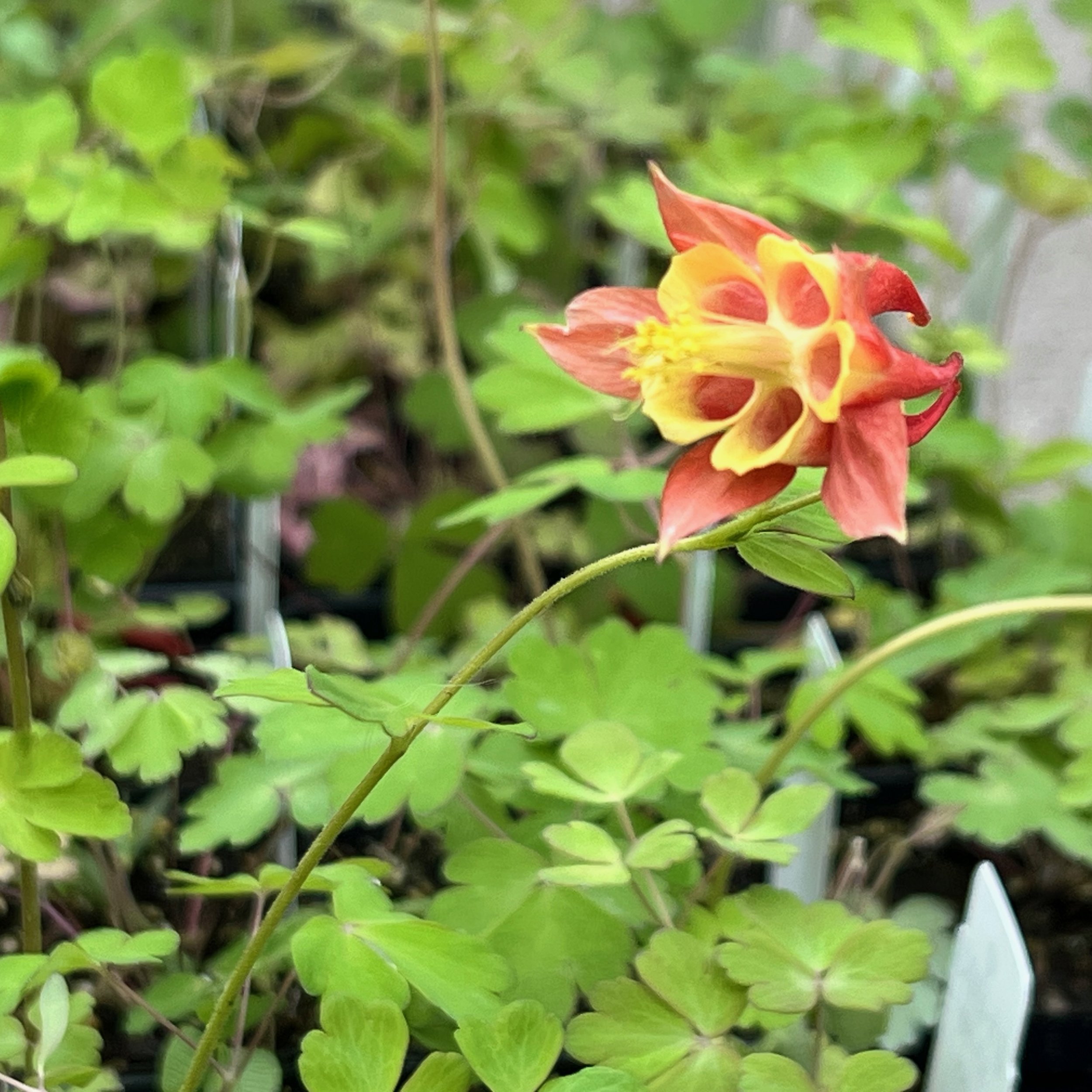Why You’ll See More Natives Than Ever at THE Plant Sale
By Sam Settlemyre, CGC Community Engagement Coordinator
THE Plant Sale, like the Civic Garden Center, has always evolved to meet current gardening trends and the plant needs of our community. In recent years, we’ve changed course to address the greatest threats of our time: climate change, biodiversity loss, habitat fragmentation and urbanization. In the face of these overwhelming global challenges, we’re encouraging people to do one simple thing: plant native plants. That’s why in 2023, THE Plant Sale is offering more native plant options than ever before.
The Native Plant Learning Curve
Native plants have evolved in our region and therefore are well adapted for our climate and support our local wildlife. However, North America’s native plants have evolved in natural areas, with only a small fraction being heavily cultivated by the horticultural industry. That means native plants can be hard to find at your local garden center. It also means there’s often limited information out there on how native plants grow in the kind of formal garden setting many of us are used to.
The plants we offer at THE Plant Sale have always been curated by CGC gardeners and horticulturists who have personal experience growing those plants. But when it comes to cultivating natives in urban habitats, we—like many of our constituents—still have a lot to learn. Our urban and suburban greenspaces have been especially degraded from decades of development in which healthy soils are scraped away, impervious surfaces exacerbate erosion issues and pollution pressures prey on weak plants. While our native plants are adapted to our area, they are NOT adapted to live in these conditions. So we, as gardeners, must learn through trial and error which native plants will tolerate our human-made environment—and which ones won’t.
Trial, Error and Growth
To do better understand how to successfully incorporate native plants into our existing environments, we at the CGC are talking to native plant growers and cultivators throughout the region, learning from their successes and failures. We’re also integrating native plants into our grounds, community gardens and restoration projects across Cincinnati. As these spaces evolve, we’ll continue trialing different species, developing long-term cultivation practices, and sharing what we learn with you so you can join us on this native plant journey.
Native Plants at THE Plant Sale
If you shopped our online sale or come to the in-person event on May 6, you’ll see more natives than we’ve ever carried before. The big experiment this year is native woodland ephemerals. These species often grow in healthy forests where soils are rich and temperatures are better regulated than in our yards, but they also hold promise for our home landscapes.
There are two main reasons why we’d like to incorporate more woodland ephemerals into THE Plant Sale moving forward. First, these plants are incredibly beautiful and unique. They are one of the first plants to arrive in the springtime, providing crucial nectar sources to early emerging insects, and their early-season blooms are synonymous with springtime here in the Eastern U.S. Second, because Cincinnati has a lot of trees, many of our constituents come to us in search of plants that can tolerate the heavy shade cast by large canopy trees on or bordering their property. The best native plants for shade are woodland species because they have evolved to thrive in those very conditions.
The goal of our spring Plant Sale is to provide more native plant options that are best adapted to live in yards and community gardens. We’re striving to select species that are shorter growing, don’t spread aggressively and provide seasonal interest. As we ask people to shift their gardening practices to more ecologically friendly ones, it is important that we help them maintain the aesthetic beauty that diligent gardeners have come to expect from their outdoor spaces. Fortunately, native plants are not only beautiful, but they attract interesting insects and wildlife to our yards, creating a thriving habitat that adds an entirely new level of interest in the garden.
Join the Movement
Our focus on ecologically friendly gardening practices aligns with a larger national movement taking place around the importance of native plants and the need to plant native in the face of climate change. More and more, we see city leaders, prominent horticultural institutions and impassioned individuals joining the native plant movement.
As we look to bolster that movement here in Cincinnati, we need your help! It’s not just about planting native in your garden, but also sharing your knowledge with friends, neighbors and family members who don’t know about the myriad benefits that native plants offer. The more people we have planting native plants, the more habitat there will be to support the declining insect and bird populations that are under threat of extinction in North America, and the more normalized native plants will become.
It Starts with One Plant
If you haven’t yet ventured into the world of native plants, there’s no better time than the present! It all starts with one plant. Join us at THE Plant Sale on May 6 and talk to our knowledgeable volunteers to find a native plant that’s right for your garden. Then bring it home and keep an eye on it throughout the season. Pay attention to what’s eating its leaves, what pollinators are visiting its flowers and how it fits into the aesthetics of your garden. Once you’ve spent a season watching the small native bees visiting its flowers, the birds eating its seeds and the caterpillars munching on its leaves, it’s hard not to develop a love and passion for native plants and the intricate web of life they support.
We hope you’ll join us on May 6 from 9am to 2pm to start your native plant journey. Come early for the best selection of natives!

